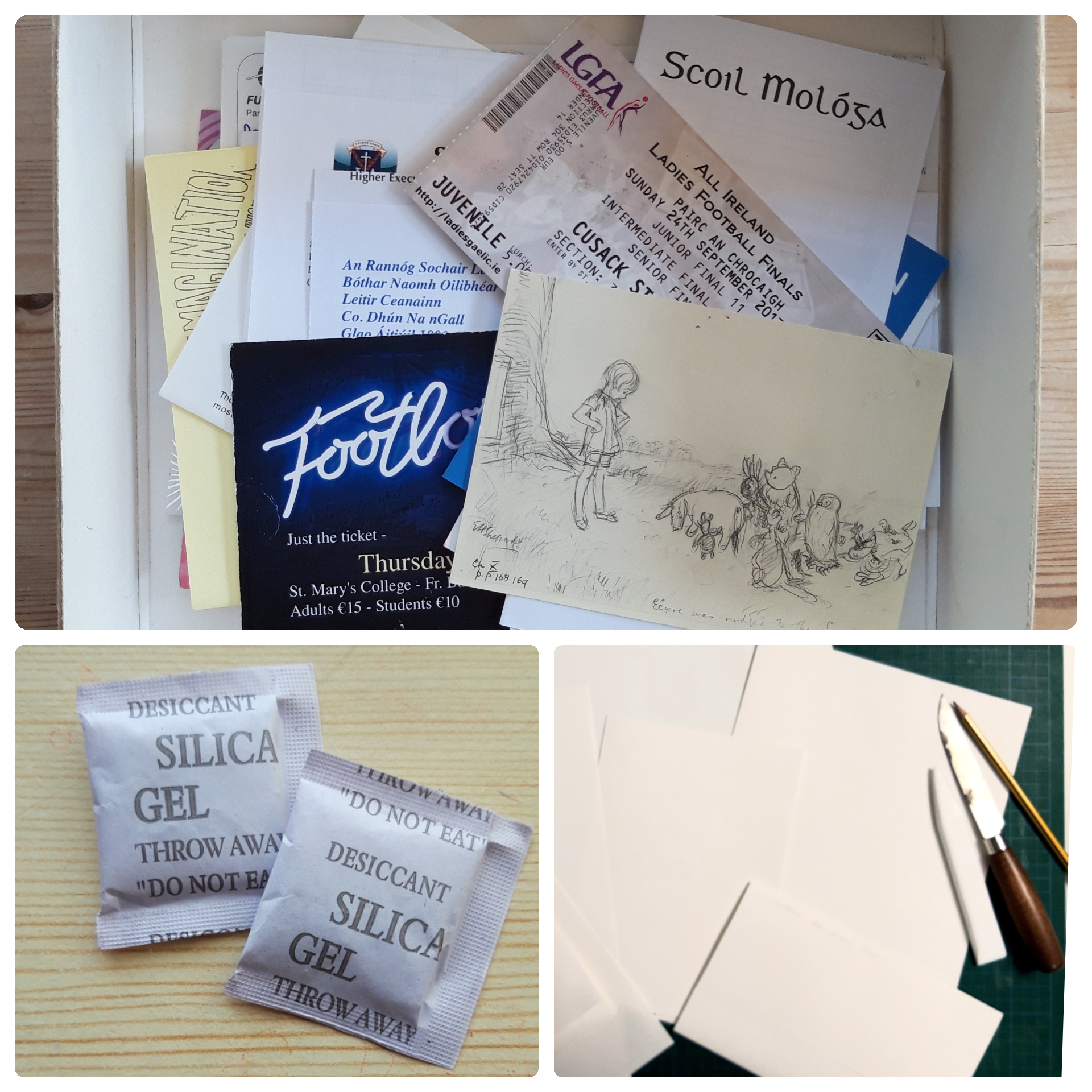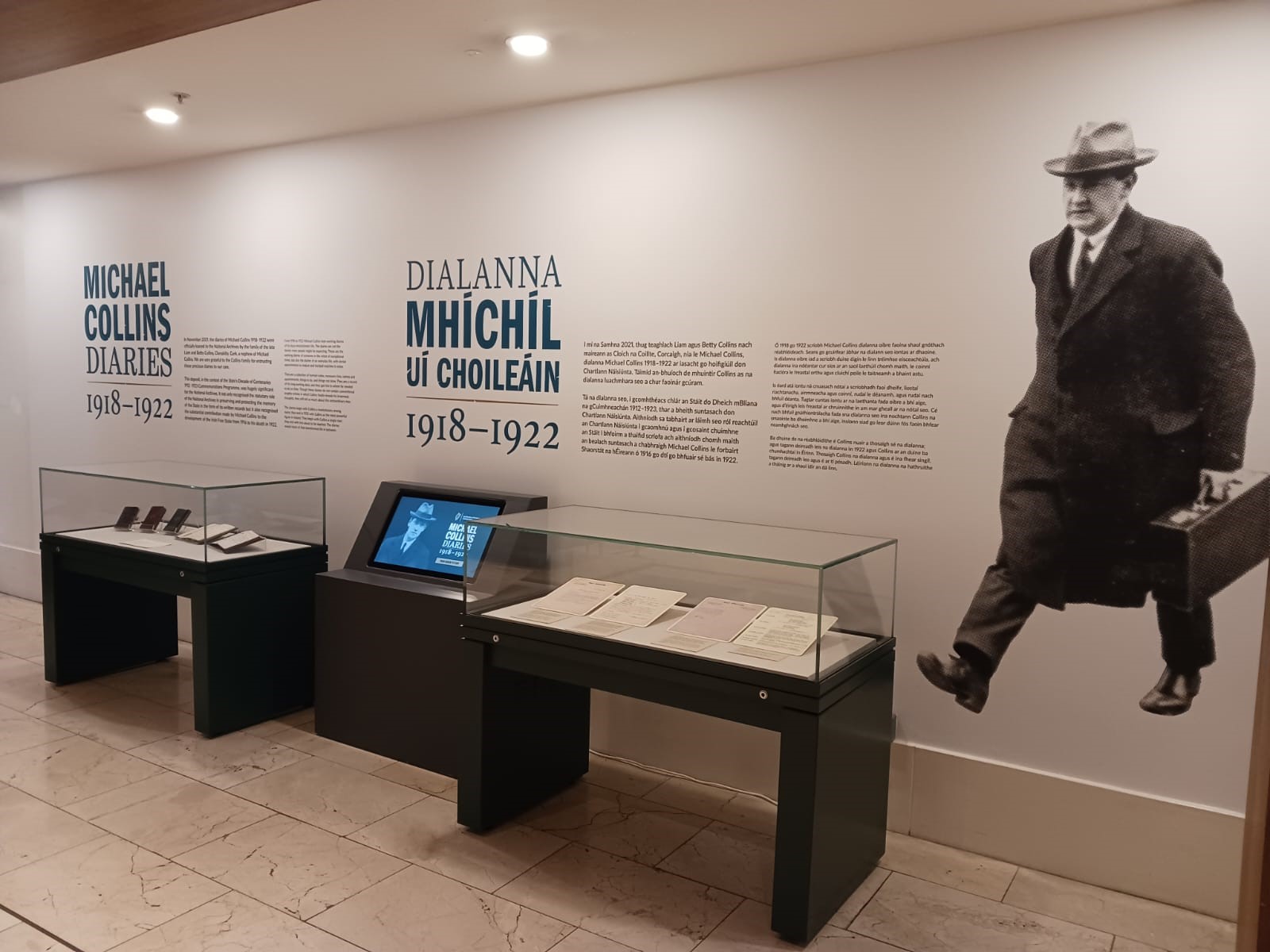Behind the Scenes
Behind the Scenes: Caring for your family papers -Part 1

Caring for your family papers – Getting organised
We all have letters, legal documents, birth and marriage certs, exam or awards certificates, photographs and albums. We might even have newspaper cuttings, magazines or articles torn out of them, tickets from events and shows, postcards and bits of ephemera that mean something to us and our family, and we want to keep them safe.
At a very basic level we can say that our documents get damaged in two main ways- through how they are kept and how we look at them. If we want to get technical about it, we can call this environmental damage and physical damage.
This post will look at how we keep our family papers and the next post will discuss consulting and handling your family papers without causing damage.
Where do you keep your family papers?
Most people don’t live in a museum or archive and therefore there is little point expecting that you can control the environment the way that an institution might. But you can monitor your environment, in fact we do every day, when you turn on and off your home heating, or take off a jumper if the room gets too warm.
We know that attic spaces and basements are prone to being cold and damp in winter and then hot and dry in the summer. In most modern homes a cool, dry place might be a spare room or a dining room which has background heating most of the time. Where are you comfortable in your house?
Your storage area
- Store the documents in a room in the house where you would be comfortable; cold or damp rooms should be avoided
- Attics, basements and sheds are vulnerable to the extremes of temperature, damp and dust
- Keep items away from sources of leaks and floods such as pipes, windows or known roof leaks
- To keep the documents safe and together put them inside a paper folder in a box, clearly labelled
- Store them inside a cabinet or in a drawer in a horizontal and flat position
What to store your family papers in
Conservators write a lot about using archive grade materials to store our records in, archival folders and boxes, which are acid free and have an extra reserve of alkaline in them to help slow down the rate of deterioration. But it can be unreasonable to expect everyone to have access to these sorts of materials.
So, what can you use? Well you can be very resourceful and creative with very little, here is how:
The Box
Ideally yes, you would like a box made from good quality materials, one that is a good size and that everything will fit into, without being crushed or damaged.
Boxes with a base and a lid are good, as it is easy to open them and gain access to the contents, so gift boxes and shoe boxes can be good. A word of caution though, biscuit tins should be avoided as the tin will tend to rust over the years. Remember if you haven’t got an acid free box lying around to be used, there is nothing to say that you can’t change the box or upgrade the box in a year or so. Also, if you have a lot of documents to store and need two or three boxes that is fine as well.
Any box will do three key things:
- Keep everything together- so nothing gets lost
- Keep the light off the documents and photographs
- Keeps the dust and pests away
Inside the box
So, what is inside the box along with all your documents?
Have a list of everything- I know my archivist colleagues will thank me for this suggestion, but so will your family. You might know what everything is and why it is being kept, but do others? Noting what is in the box is an effective way of making sure that your knowledge is shared and that your family history is secure. Also, if you have time, do what the monks used to do and transcribe the handwritten notes and letters- making a copy of something is one on the primary ways to ensure that the information doesn’t get lost.
Paper folders– paper folders can be made from a sheet of paper- I realised recently that I make paper folders to fit all shapes and sizes of documents out of a sheet of A3 paper. A simple single creased paper folder can protect a damaged or fragile document, even one that is in pieces. We can also learn a lot from the past- it is very common to see simple paper wrappers on bundles of documents that are also annotated and tell you what is in the bundle, if they could do it in the 18th Century, there is nothing to say we can’t do it in the 21st!
Silica Gel packets– do you recognise these, you might find them in a new box of a pair of shoes or a handbag, sometimes you’ll find them in boxes or storage containers. How often do you put them in the bin?
These little packets of silica gel are there to absorb excess moisture whilst items are in storage; so if they work to look after your new shoes and handbags, they will work looking after you family papers.
Gather these packets up and pop them in your storage box; when you check the box if they are hard and solid, it means that the crystals inside have absorbed excess moisture. Now you need to do 2 things:
- Replace the silica gel packet
- Find somewhere different to store your box- there is too much moisture in the air in the current storage place.
Outside of the box -Digitisation at home
You have all heard about archives digitising collections and making them accessible online; you can do the same at home. Technology has given us digitisation at our fingertips- well either on a camera or smart phone. Here are some reasons why it is a good idea,
- Take a photograph of each document to have a record of it.
- Take a photograph of both the front and the back of the document in case there are annotations on the back.
- This will give you a copy of the document which can be shared with other family members
- This means that the documents can be looked at and discussed without having to handle the original all the time.
- It means that the photograph can be displayed, and the original kept safely out of the light.
- It also records the condition of the document as it is now.
These are just some ideas of things we can do at home to look after our family papers, they may not be worth thousands of euro and important to the world at large, but to each of us and our families they are precious.
See here for part two where we learn how to handle the material and to prevent causing damage in the first place.
Zoë Reid, Senior Conservator


